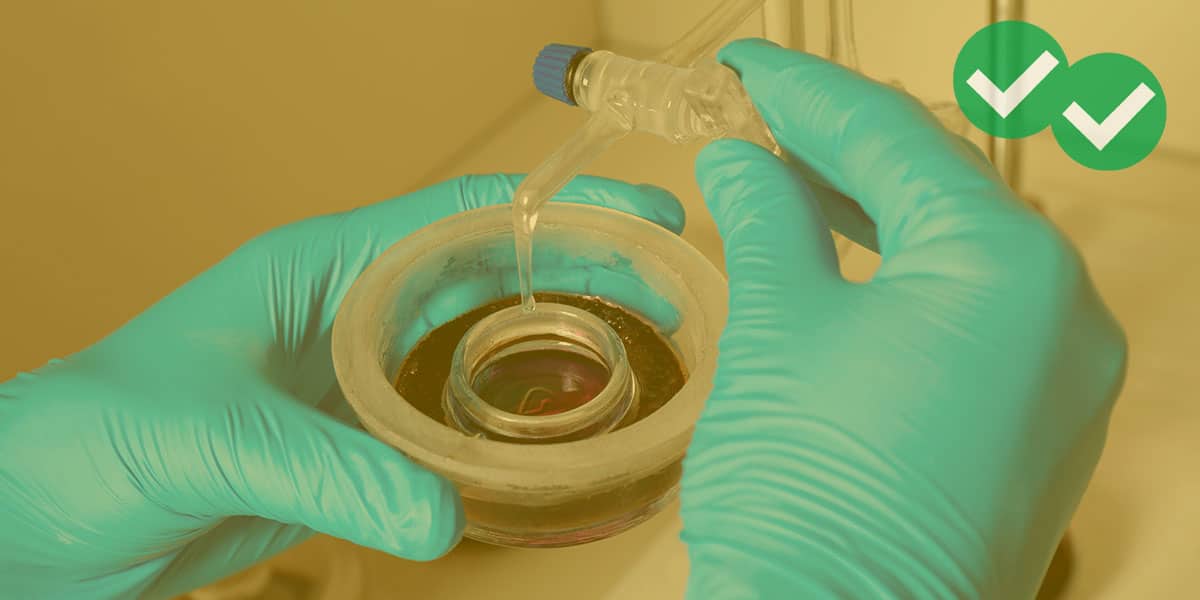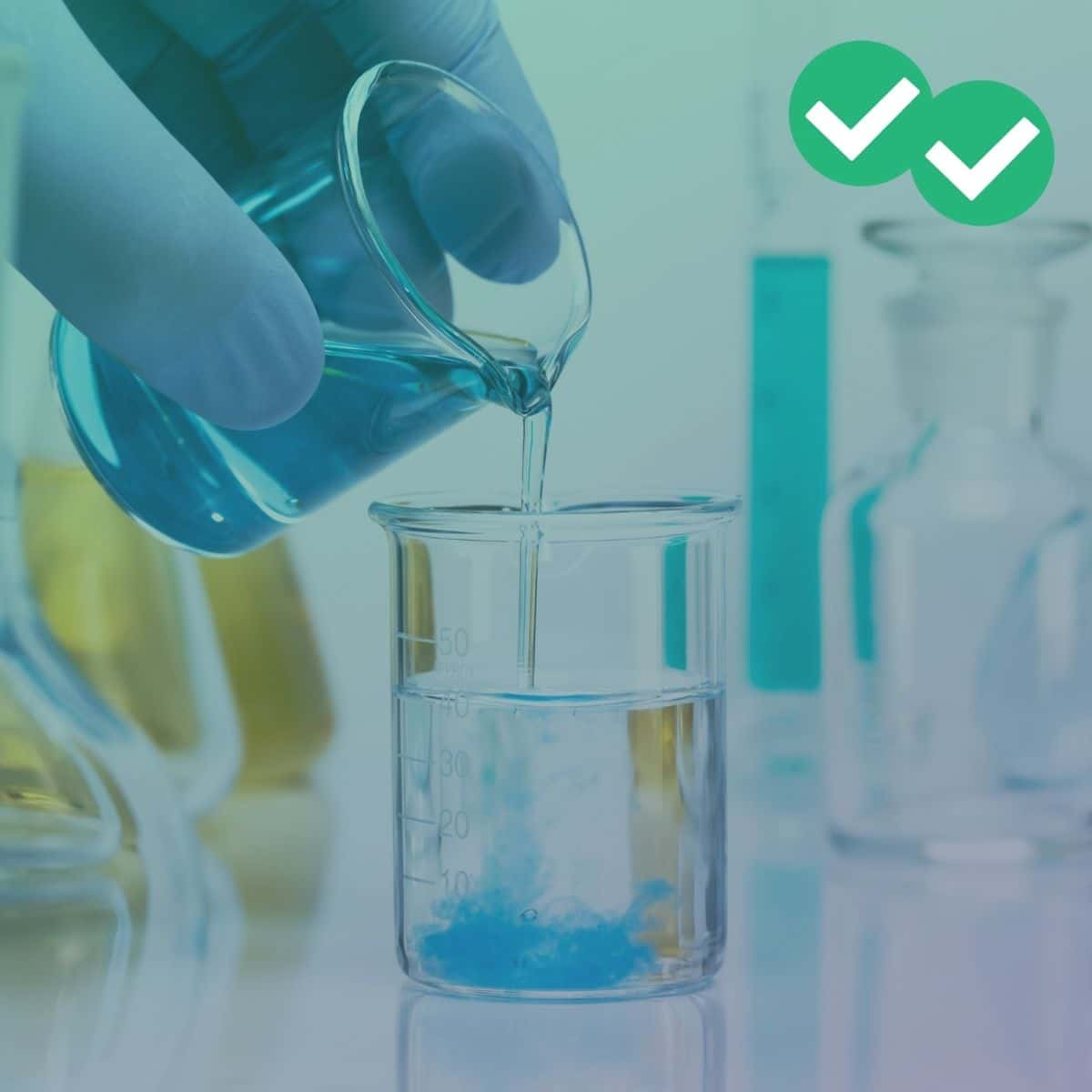
It probably won’t come as a surprise to you that the MCAT is a science heavy exam. As you study for the Chemical and Physical Foundations of Biological Systems section, what do you need to know? In this post, we’ll break down the MCAT physics and chemistry principles you need to know, including organic chemistry, biochemistry, and even biology. Before we do that, though, here’s the section at a glance!
| MCAT Chemistry and Physics Section | Breakdown |
|---|---|
| Number of Questions | 59 |
| Timing | 95 minutes |
| Time per Question | 1.6 minutes (1 minute 36 seconds) |
What will the Chemical and Physical Foundations of Biological Systems section test? Here are physics and chemistry topics you can expect to see, and how often they show up:
- General chemistry (30%)
- Biochemistry (25%)
- Physics (25%)
- Organic chemistry (15%)
- Biology
For a full overview of specific topics you’ll see on all MCAT sections, check out our expert-curated list of MCAT topics!
Keeping all of that in mind, what subjects will crop up on test day? Here’s a deeper dive into MCAT physics and chemistry topics tested in the Chemical and Physical Foundations of Biological Systems section!
Table of Contents
MCAT Chemistry Topics
MCAT General Chemistry
Many of the must know general chemistry concepts on the MCAT have a close relation to biology. (Unlike the old version of the test—where students could get passages on any random chemistry or physics topic—passages are now more relevant to medicine.) Here are a few topics you’ll see:
- Stoichiometry. This is a basic topic but one just as important as all the others. You need to know the common units used in chemistry and be able to do all sorts of calculations. For example, you could be asked to determine the mass of a solute present in a solution.
- Thermodynamics. Energy is everywhere in biology. Every cell in your body requires energy to run chemical reactions. According to the 1st law of thermodynamics, that energy cannot come from nothing. Instead, we are constantly ingesting food sources that our body than processes to produce energy. In addition to the laws of thermodynamics, you also need to understand enthalpy, entropy, and Gibb’s free energy for the MCAT.
- Acids/Bases. More than half of the human body is water and most of that water is kept at a fairly constant pH. This allows the enzymes within our body to function effectively. For the MCAT, you need to know how to calculate the pH of solutions, how buffers work, and how titrations can be used to determine the concentration of an unknown solution.
- Kinetics. While it’s important for chemical reactions to occur spontaneously within our bodies, it’s just as important for them to occur at the right rate. Kinetics is the branch of general chemistry that deals with how fast a reaction is proceeding. To answer MCAT kinetics questions, you need to know the basic definition of reaction rate, the factors that affect reaction rate, and how to determine the order of a reaction.
- Redox Reactions. One of the most important types of reactions in our body is redox reactions. If you think about the most important biochemical processes (glycolysis, Krebs cycle, electron transport chain, etc.), you will notice that almost every single one involves redox reactions. For the MCAT, you need to know the definitions of oxidation and reduction, be able to identify the oxidant/reductant in a reaction, and determine the oxidation number of atoms in compounds.
- Want to find out more about the general chemistry section of the MCAT? Check out Magoosh’s Introduction to General Chemistry video lesson!
MCAT Organic Chemistry
Many students want to know: can you take the MCAT without taking organic chemistry? Maybe…if you study a ton on your own. But although you could technically take the MCAT before finishing your organic chemistry course, keep in mind how much organic chemistry is on the MCAT. The topics make up 15% of your score in one of the MCAT’s four sections. In other words, almost 4% of the entire MCAT is organic chemistry. That’s a huge percentage of questions you want to be able to answer, and taking organic chemistry is the best way to prepare.
Besides this, the fact is, organic chemistry is an AAMC admission requirement anyway, so you really should take the course before taking the MCAT.
However, the MCAT won’t test these concepts exactly like your professors did. A major difference between the MCAT and college organic chemistry exams is the exam format. In your college class, you may have been asked to draw molecules and arrow-pushing diagrams. The MCAT is a multiple-choice test and doesn’t contain any free-response questions. In addition, the MCAT focuses more on the foundational concepts of organic chemistry than specific reaction types.
- Structure and Stability. This is a basic topic but one just as important as all the others. A lot of organic chemistry questions on the MCAT can actually be answered by choosing the answer choice with the most stable molecule. Factors that you have to consider include resonance, ring strain, induction, and unfavorable interactions due to sterics.
- Amino Acids. You may have heard that biochemistry is a big deal on the new MCAT and it’s true. One of the major biochemistry topics, amino acids, is also an organic chemistry topic. For the exam, you need to know the structure of the side chains, the pKa of the side chain (if applicable), the one-letter code, and the three-letter code for each amino acid. In addition, you need to be able to classify each as hydrophobic, hydrophilic, acidic, or basic.
- Separations and Purifications. If you’ve taken organic chemistry lab, then you may recall that much of the experiments involved separating and purifying compounds. For the MCAT, you will have to recall some of those commons techniques that you may have used such as thin layer chromatography, distillation, and liquid-liquid extraction. In addition, you will need to know some more advanced techniques, including column chromatography, gas chromatography, high-performance liquid chromatography, size-exclusion chromatography, affinity chromatography, and ion-exchange chromatography. Need a quick review? Check out Magoosh’s separations video lesson!
- Absorption Spectroscopy. An equally important but distinct set of laboratory techniques is absorption spectroscopy. As opposed to separating compounds, these techniques focus on identifying specific features of the compounds. For the MCAT, you need to be familiar with NMR spectroscopy, UV/VIS spectroscopy, and infrared spectroscopy.
- Carbonyl Chemistry. One of the most important functional groups in biology is the carbonyl group. Numerous biochemical reactions in the body involve carbonyl functional group reactions. For the MCAT, you need to know nucleophilic addition reactions, how enolates are formed, and the reduction/oxidation of carbonyl groups.
MCAT Physics Topics
What kind of physics is on the MCAT? You’ll see five primary concepts tested—units and dimensions, forces, fluids, waves, and radioactive decay—though the subjects within these topics are, clearly, numerous. Here’s a closer look at each of these concepts and what you need to know before the official MCAT test.
- Units and Dimensions. This is a basic topic but one just as important as all the others. You need to know SI units for the physical dimensions to understand the context of physics questions on the exam and to answer them. This also includes knowing unit conversions, such as V = J/C and J = kg·m/s2.
- Forces. Just about everything in physics involves forces. In order for an object to start moving, its velocity has to change. In order for the velocity to change, the object must experience acceleration. The only way to provide acceleration is with a force. For the MCAT, you will want to know how to draw free body diagrams and apply Newton’s 1st, 2nd, and 3rd laws to do force calculations.
- Fluids. On the old MCAT, students could get passages on any random chemistry or physics topic. Students complained because many of these passages seemed to have nothing to do with medicine. The good news is that all of the passages on the new MCAT are biologically relevant. As more than half of the human body is water, you can see why fluids is one of the must know physics concepts. You will need to apply concepts including buoyancy, density, hydrostatic pressure, continuity, and Bernoulli’s equation to answer MCAT physics questions.
- Waves. The two most relevant waves to humans are light and sound. Both type of waves are key to our ability to perceive the world. For the MCAT, you will need to understand the general properties of a wave, including energy, wavelength, speed, and frequency. Specifically for sound, you need to know how sound is produced, how the loudness of sound is quantified, and how sound is affected by the Doppler effect. Specifically for light, you need to know how geometrical optics can be used to resolve visual defects (myopia and hyperopia) and how reflection and refraction affect light rays.
- Radioactive Decay. Radioactivity may sound more like a general chemistry topic but the MCAT also classifies it as a physics topic. On the MCAT, you will need to be able to recognize the different types of radioactive decay (α, β, and γ) and do half-life calculations.
How to Study for MCAT Chemistry and MCAT Physics
The Chemical/Physical section can feel overwhelming when you start preparing for it. Not only are you selecting and applying theories and equations, but you’re also manipulating them in complex problems. Furthermore, it may have been a few years since you’ve seen some of these concepts—and even then, a lot of premed students struggle with them.
So what can you to do integrate all of this information into your study routine? Here are my top tips for gaining confidence and accuracy in this section!
MCAT Chemistry and MCAT Physics Study Methods
- Take notes by hand. The diagrams and formulas you see can feel overwhelming. Drawing and writing them out is a great way to build muscle memory around these concepts and integrate them into your mind in a different way!
- Organize concepts by both topic and theme. Knowing what information “goes” together will help you weave it together into a coherent story in your mind.
- Start with basic problems. For most of what you’ll see on test day, memorization won’t be enough to get the question right. But it’s crucial to start with the basics so that you can gain confidence and reinforce the formulas that you’ve learned before you jump into solving more complex problems.
Click here for a quick MCAT physics/chemistry quiz to test your skills!
- Give yourself a solid grounding his the foundations. In MCAT physics and chemistry (and physics and chemistry more generally), each new concept builds on previous concepts. You have to have a solid understanding of one before you move on to the next! A lot of students find it helpful to review basic concepts and formulas with MCAT flashcards.
- Keep the big picture in mind. Mapping out your content review in advance breaks your studying down into chunks, and it gets your mind ready for study at particular times of day, as well. You can help set yourself up for success with a tailored MCAT study schedule.
MCAT Chemistry and MCAT Physics Study Priorities
As you work on incorporating all of these tips into your routine, what kinds of materials should you be studying? If you’re wondering where your focus should be, here are my top tips for focused MCAT chemistry and physics study.
- Know Your Amino Acids! This will be crucial for the biology and chemistry sections. As each wave of MCAT students confronts the new exam, they all say the same thing: Knowing your amino acids is non-negotiable if you want to score well.
- Various Hormones and Signaling Molecules in the Body. I know this sounds more like biology, but it appears in chemistry, too. Ideally, you want to know where a hormone is made, its molecular structure and properties, and what it does.
- Be Wise with Flashcards: When learning factual content, use flashcards and use them smartly. You want to be able to recall terms as well as recognize them, so set them up in a way where you can quiz yourself based on either side of the card. You might even consider creating duplicate flashcards on terms so you can test yourself on different aspects, like molecular structures, notation, and how they relate to physiology.
- Tack it to Your Fridge! One other reinforcement method for important processes like energy pathways, kinetics, and enzyme functions is to print out a copy of a diagram describing those processes and place it somewhere you will see it all the time, like next to your bed or on your refrigerator. This will help burn it into your brain! Memorizing things is all about wearing that groove into your brain by seeing and using the material enough times.








Leave a Reply